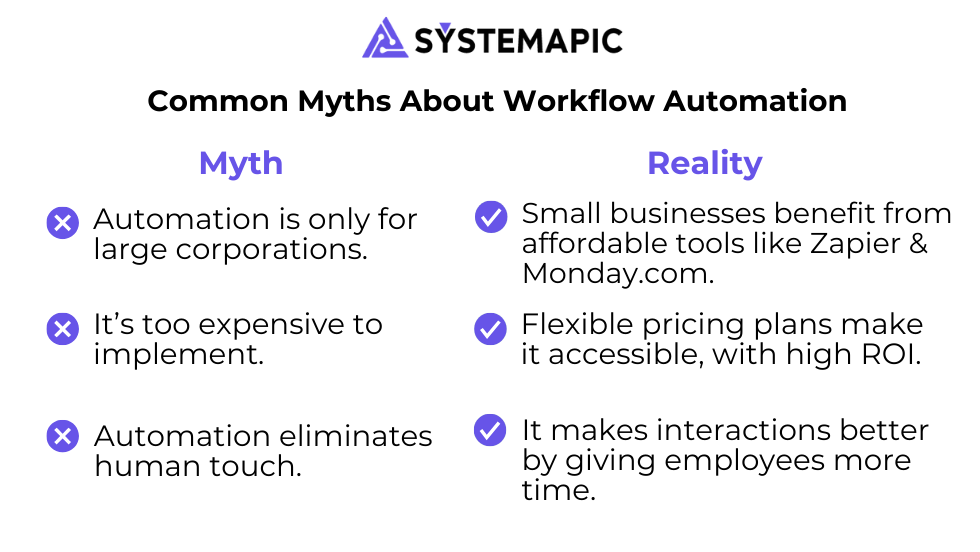Manually managing repetitive tasks is something none of Systemapic’s clients prefer to do. Our clients went from manually following up on customer inquiries and updating spreadsheets to having more time for business growth. They all have one thing in common – they want to streamline their countless repetitive tasks so there’s more room for strategic thinking and development.
Custom workflow automation is the single answer to their concerns. Workflow automation handles routine tasks efficiently and lets businesses focus on areas that truly matter. 82% of modern businesses in the USA switched to workflow automation instead of getting caught up in manual processes and wasting precious work hours. With this change, their teams could allocate their time and energy to innovation and long-term goals
Workflow automation is the process of using software tools to complete repetitive tasks with minimum human intervention. Think of it as setting up a system that makes sure all tasks are completed on time, every time, without micromanagement.
Examples of workflow automation include:
Automation simplifies operations, reduces errors, and allows businesses to focus on their goals instead of mundane tasks.
Business owners often hesitate to adopt automation because of some common misconceptions. Some of them are:
Many SMB owners believe automation requires huge budgets and complex systems. This leads to them believing Google Sheets is the only option they have. However, this is far from the truth. Small businesses can benefit significantly from tools like Zapier, Asana, or Zoho. A small marketing firm saved over 15 hours/week when they automated their client follow-ups and project updates.

There are so many tools in the market that offer flexible pricing plans starting as low as 10$ per month (although some tools also offer upfront costs) but the time saved and increased efficiency make these tools money worth. For example, our US mid-sized e-commerce client achieved a 150% ROI after automating their order processing and customer notifications. All this was within 3 months!
Not true at all! We recently helped a healthcare clinic implement an appointment reminder system with the help of a no-code platform in just two days. No technical expertise was required from their team.
By automating repetitive tasks, teams have more time to focus on meaningful interactions. A real estate company automated initial lead follow-ups but ensured personal calls from agents were prioritized, leading to better client relationships.
The fear that automation replaces employees is common. In reality, it shifts their focus to higher-value tasks. For example, a construction company automated report generation, allowing staff to concentrate on project planning and client communication rather than administrative work.
Workflow automation is no longer a luxury it’s a necessity in today’s fast-paced business environment. 89% of modern businesses in the USA achieved at least a 100% ROI within the first year of custom workflow automation. Here’s why it’s essential for USA businesses:

Businesses across industries benefit from automation in different ways. Here are some specific examples:
[Not sure if your business processes can be automated? A quick consultation with our System Consultant can help you uncover opportunities to save time and resources.]
These examples show how workflow automation is a versatile solution for modern challenges. Businesses from different industries can benefit from automation in different ways. Here are some specific examples:
Adopting workflow automation doesn’t have to be overwhelming. Here’s a practical roadmap:
[Feeling unsure where to start? Our team at Systemapic can help assess your business needs and recommend tailored no-code or low-code solutions that simplify the process.]
The business landscape is rapidly changing, and automation is at the forefront of this evolution. Here’s why you should act now:
Workflow automation doesn’t have to be complicated. At Systemapic, we specialize in creating tailored automation solutions that fit your business needs. Let us help you simplify processes, save time, and focus on growth. Contact us today to start your automation journey.
